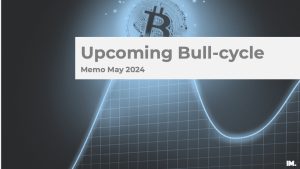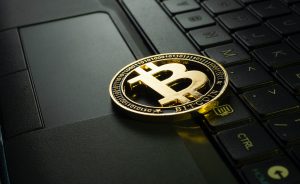I took a long break from writing of almost 7 months. I had found myself reacting to the news of the day, and thought I had lost some touch with what really matters for me as an investor in financial markets. Just like a cold, these events are nothing else but symptoms. The root cause is (I dare say) always holistic. Much more than we are taught to acknowledge, at a societal level.
I believe that in this world of internet and social media, we compromise quality for quantity. With thinkers being pushed to create at inhuman rates, something which kills extensive thought and great arguments.
I decided to adopt a new format, which give me the time to reflect on what I see in markets (worldwide) and eventually make better investment decision: memorandums. I am also doing it for a selfish reason as this will give me the opportunity to document my (ever evolving) thoughts on the market and give me an opportunity to assess the accuracy of my argumentations looking backwards in a few years.
The increase in interest rates in the past year has put a halt to a 40-year stimulative monetary policy that started in the 1980s. Even if, historically, we are nowhere near ‘high’ interest rates, the rates are ‘high enough’ for individuals, companies, and investors to start feeling the consequences, especially if they overextended themselves in the years prior. One even might argue that we finally have a ‘free market’ for money which we have not had in 40 years due to central bank imposing the fact that ‘money is a cheap commodity’. Now the market is the one determining what the actual price of money is.
Here is one high-level observations about the market, at least from a Western European perspective and through Dutch lenses. We have reached a point in time where lending money can create equity-like returns at a fraction of the risk or close to no risk at all; the S&P 500 has historically generated about 10% return a year, while nowadays investors do not nearly need to take that much risk to generate returns between 7-10% in actual cash money, paid out quarterly, secured by contracts, and guaranteed by the underlying assets. In other words, even if a project were to default, the investors could still make great returns by selling off the underlying assets.
Obviously not all projects in need for money are great projects and can even afford to pay interest rates in the neighborhood of 10%. On top of that, the valuation of the underlying assets remain a big uncertainty. How do we know assets are worth what owners, agencies, and ‘the market’ says they are worth? The rise in interest rates has automatically caused asset prices to cool down, or at best freeze due to sellers being more reluctant to sell unless forced to by external circumstances (e.g., refinancing, cash flow issues, taxes, etc.).
Generally, it is safe to expect that more capital allocation will go to credit products with a lot of attention on underwriting and asset valuation to offer the right guarantees to investors. In relative sense, this is still much less risk compared to equities, properties, and other commodities at the moment. However, I feel there is an exception.
Delayed Ripple Effect
A (temporary) appreciation of assets might happen because the actual ripple effects of increased interest rates will only be seen in a few years from now. In these few years, we find ourselves in an environment characterized by:
- low confidence and expectations of returns for equities,
- high demand of liquidity (mostly fear-based), and
- relatively high interest rates or at the least high enough to generate attractive returns compared to current inflation (and expectation thereof).
If these conditions continue, it is very likely that assets that are generally considered ‘store of value’ will turn very popular. This includes Bitcoin, as the ‘digital gold’. The general dynamic is that asset appreciation is stimulated in period of ‘easy monetary policies’ and ‘low inflation’. I will part the topic of monetary policies for now, and focus on inflation only. ‘Low’ inflation is obviously a relative term. On top of that, whatever measure of current inflation is not per se ‘good’ or ‘bad’, but the expectation of future inflation is what we need to worry about. When I started my journey as an investor, I got into the habit of reading financial reports under the assumption that they would help me determine whether a stock would be under- or overvalued. The problem with using ‘absolute’ numbers is that you assume people are actually aware of that and base their decision making on facts. With companies for example, people tend to compare actual financial performance with their expectation of financial performance over a given period. In other words, a company making $1 million profit is a bad sign if investors expected $3 million. Vice versa, it is a good sign if investors expected break-even or even losses. The same applies to inflation.
To understand asset appreciation in relation to inflation, we need to look at inflation in relationship to equity returns and interest rates. The former affects the investors’ willingness to ‘take risk for profit’. The latter determines the returns investors can realize by lending money. If we plot these three factors through time, it looks like credit typically returns just above inflation. By credit I mean specifically short-term treasury notes. My feeling is that the general willingness to ‘take risk for profit’ is driven by a number of factors (in random order):
- The absolute return in cash money that credit products can consistently generate for investors, regardless of the actual inflation and in relationship to the historical equity returns,
- Whether people are in fear or not, which determines the expectation put on equity returns and therefore (said loosely) how speculative markets get.
Loose Reference Point
Inspired by Ray Dalio’s approach to financial analysis, I asked myself: “Has this happened before?”. And to be more specific, have we ever seen a market with:
- rising interest rates,
- medium-high inflation despite (relatively) high interest rates,
- low confidence in equity returns, and
- high capital allocation in credit products
which resulted in appreciation of assets generally deemed as ‘store of value’?
Looking back at history, I found one moment in time that might matches this description. However, little side note and disclaimer, I do not know whether the overall context is comparable. My gut feeling says so, but I do not have hard proof yet.
The moment in time is 2004, a relatively quiet time located a few years after the dot com bubble burst and before the global financial crisis. Why is this moment relevant for our example? Despite the market for interest rates still being on the descend, continuing a trend set in motion since 1980, for a brief period of time after the dot com bubble, the Federal Reserve increased interest rates for a few years in the hope of taming inflation (Similarity nr. 1). However, inflation continued at comparable levels since the dot com bubble burst (Similarity nr 2.), credit products thrived realizing more and more profits for investors (Similarity nr. 4), overall confidence in equity returns was at its lowest in years after many people lost money in the dot com bubble (Similarity nr. 5).
In this context, SPDR launched the Gold ETF (loosely comparable to the BTC Spot ETF in the making) in 2004 under ticker NYSE: GLD. This would make gold investing available to a broader public, including pension accounts. In the period between the launch in 2004 and the start of the global financial crisis in October 2008, GLD surged:
- 106% in April 2008 compared to its listing price, and right before the financial crisis,
- 63% in October 2008 even after the 20% drop due to the financial crisis.
Bottom line, people were drawn to assets considered as ‘store of value’ in times of uncertainty. In other words, the ripple effect of the central bank raising interest rates following the dot com bubble was observed only years later in 2008. Is this the same growth we can expect from the BTC Spot ETF? Well, if the fake news going around on October 16, 2023, could be taken as a proxy, I have strong reasons to believe so.
How can I be wrong?
I learned from one of my great mentors that ‘It is great to form your own opinion about a market, but never to take action as if you are 100% right’. So this can play out in a multiverse of madness. Below a few scenario’s I have been playing out in my head:
- I have not factored in the effect central banks can have with their future monetary policies which might take an unexpected turn. A business partner of mine even sketched the possibility of central banks turning to stimulative monetary policies and accepting ‘relatively’ high levels of inflations (at least temporarily) to aid the economy in light of the refugee crisis in Europe, war in Ukraine, Gaza, etc. This might make the tides turn for equity returns and overall asset appreciation.
- Changes in the property, capital gains, and overall company tax policies might sway investors’ interest in the short-medium term and force them to restructure their investment portfolio. Elections are coming up in many key Western countries. This is already creating a lot of uncertainty about asset allocation, cash flow, and company profits.
- The crackdown on crypto is far from over. Binance is under severe pressure from the SEC and I am not entirely sure they will make it out of it with little to no consequences. And at this points, Binance is the crypto market. At the same time, I am also seeing that key infrastructure companies are being taken over by ‘Wall Street’, meaning that institutional asset managers are positioning themselves in key points of the decentralized infrastructure like Bitcoin miners, validators, layer 1 projects, and digital currencies.
In general I am optimistic about the future of Bitcoin. I do not know in what form (currency, store of value, or both) and in what context (independent financial system, implemented in the classic financial system, and again ‘or both’).
Newsletter
Stay up-to-date with the latest developments in the stock and crypto market., fund, and crypto market.
Disclosure
These are unqualified opinions, and this newsletter, is meant for informational purposes only. It is not meant to serve as investment advice. Please consult with your investment, tax, or legal advisor, and do your own research.




No comment yet, add your voice below!